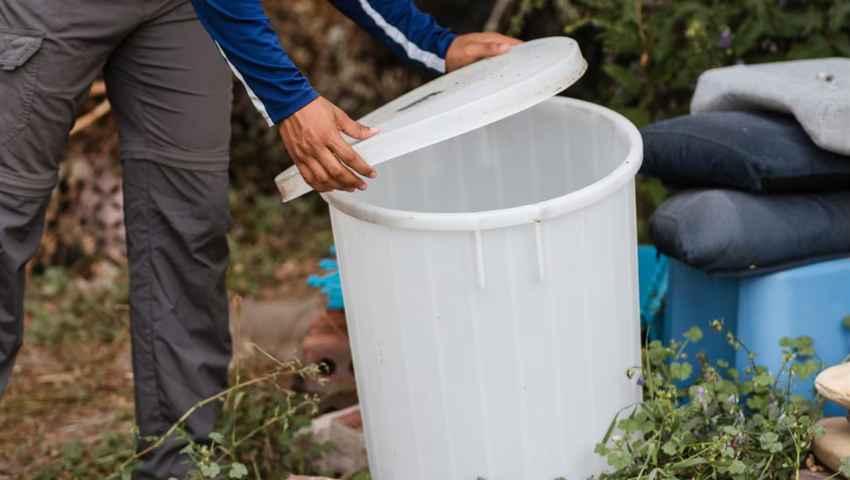A deadly mosquito virus in Massachusetts communities is spreading now. It is a virus known as Eastern Equine Encephalitis (EEE) or Triple E caused by mosquitoes.
The most dangerous thing is that recently, health officials confirmed the first human case in the state in four years. As a result, ten communities in Massachusetts have been classified as having a critical or high risk of EEE, according to the Massachusetts Department of Public Health. This article lets you learn what you need to know during this situation. Here is everything we know so far.
What is Eastern Equine Encephalitis (EEE)?
Eastern Equine Encephalitis (EEE) is a virus that spreads to humans through mosquito bites. “Eastern Equine Encephalitis” originated when the virus was first discovered in horses (equines) in the 1830s. The virus mainly attacks the central nervous system, causing severe brain and long-term nerve problems. About 30% of people who develop encephalitis after being bitten by an EEE-infected mosquito do not survive the infection.
What are the Recent Cases and Affected Communities?
According to the CDC, few cases have been reported recently in the U.S., including thirteen cases and one death in 2020, five cases in 2021, one in 2022, and seven in 2023. Moreover, in the 2019 outbreak, the state of Massachusetts alone reported twelve cases, resulting in six deaths.
Where is EEE Spreading in the U.S.?
Eastern Equine Encephalitis (EEE) cases in the U.S. are most common in Eastern and Gulf Coast states. As of August 20, the CDC reported three severe cases this year in Massachusetts, New Jersey, and Vermont. According to the Cleveland Clinic, EEE is typically found near freshwater areas like swamps and coastal regions. Public health officials have identified the following towns for mosquito spraying to reduce EEE risk:
- Carver
- Halifax
- Kingston
- Middleborough
- Plymouth
- Worcester
- Plympton
- Rochester
- Wareham
- Douglas
- Dudley
- Oxford
- Sutton
- Uxbridge
Also, Plymouth, located about 40 miles southeast of Boston, has closed public outdoor recreation areas daily from dusk until dawn. After the EEE infection of a horse in town, authorities made this decision. Further, to avoid peak mosquito activity, local health officials have advised residents to finish outdoor activities by 6 p.m. until September 30. After that date, people should complete their outdoor activities by 5 p.m.
How to EEE Spreads?
According to the CDC report, Eastern Equine Encephalitis (EEE) is a virus that mainly circulates between birds and mosquitoes. Also, This virus can infect humans and other mammals indirectly. Two types of mosquitoes are involved in this cycle:
Culiseta melanura: This mosquito, also known as the blacktailed mosquito, spreads the virus to birds and gets infected when it bites them. It rarely bites humans, so it’s not a big threat to people.
Bridge vectors: Mosquitoes like Aedes, Coquillettidia, and Culex bite both birds and mammals, including humans. They act as a “bridge,” transmitting the virus from birds to humans and other mammals.
Furthermore, EEE cannot be spread directly from person to person, animal to person, or person to animal.
What are the Symptoms of EEE?

Since the bite of an infected mosquito spreads EEE, anyone in an area with these mosquitoes is at risk. Symptoms may appear within four to ten days if you get bitten and infected.
Symptoms of EEE, or “triple E,” include:
- Fever
- Chills
- Headache
- Vomiting
- Muscle Aches
- Joint Pain
These symptoms usually last one to two weeks. According to the CDC, most people recover fully if the virus does not affect their central nervous system.
A severe EEE infection can cause serious neurological problems, leading to brain inflammation (encephalitis) or swelling of the tissues around the brain and spinal cord (meningitis).
According to the CDC, symptoms of severe EEE include:
- High fever
- Behavioral changes
- Seizures
- Vomiting
- Diarrhea
- Coma
These severe complications can be life-threatening, with about one in three people with EEE dying from the infection. Those who survive may face long-term issues such as intellectual disabilities, seizures, or personality changes.
What are the Treatments for EEE?
Unfortunately, no vaccines or specific treatments are available for EEE, but supportive care can help manage symptoms and prevent complications. Here are some treatments and options for EEE:
- Rest
- Fluids
- Over-the-counter pain relievers
- Intravenous fluids
- Pain management
- Anti-nausea medication
- Respiratory support
- Nursing care
Also, people with severe cases may need to be hospitalized.
Prevention Measures and What You Need to Know?
Prevent Mosquito Bites
- Use Insect Repellent

Choose an EPA-registered repellent with one of these active ingredients:
- DEET
- 2-undecanone (a plant-based ingredient)
- Para-menthane-diol (PMD)
- Picaridin (also known as KBR 3023 or icaridin)
- IR3535
- Oil of Lemon Eucalyptus (OLE) (a plant-based ingredient)
These repellents are safe and effective when used as directed, even for pregnant and breastfeeding women.
- Wear Protective Clothing
- Choose loose-fitting, long-sleeved shirts and pants.
- Wear clothing and gear treated with permethrin, an insecticide that repels or kills mosquitoes. (Permethrin-treated clothing remains effective even after several washes.)
For more details about protective clothing, visit the CDC’s official website.
- Remove Mosquitos from Your Home

- Remove standing water from containers like buckets, tyres, and toys to reduce mosquito breeding sites. Change the water in fountains, bird baths, and plant trays at least once weekly.
Further, stay indoors from dusk to dawn, when mosquitoes are most active. By being so, people can protect themselves and their communities from mosquito-related dangers.
Protect Your Animals
- Keep horses indoors at night to reduce their exposure to mosquitoes.
- Talk to your vet about mosquito repellents that are safe for horses.
- Report any suspected cases of WNV or EEE in animals to the Department of Agricultural Resources, Division of Animal Health.
Conclusion
The deadly mosquito virus in Massachusetts poses a severe threat to public health. Understanding how EEE spreads and its symptoms is essential for everyone. Also, since there is no specific treatment, preventing mosquito bites is crucial. So, following recommended safety measures can help protect communities from this dangerous virus.
Also read,










